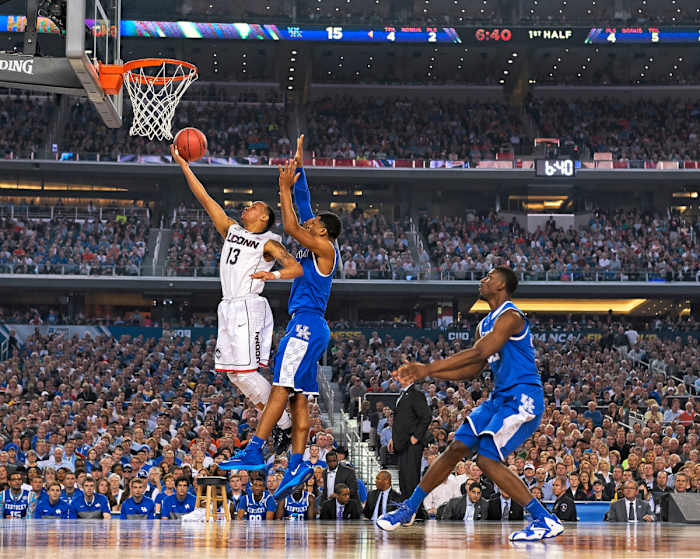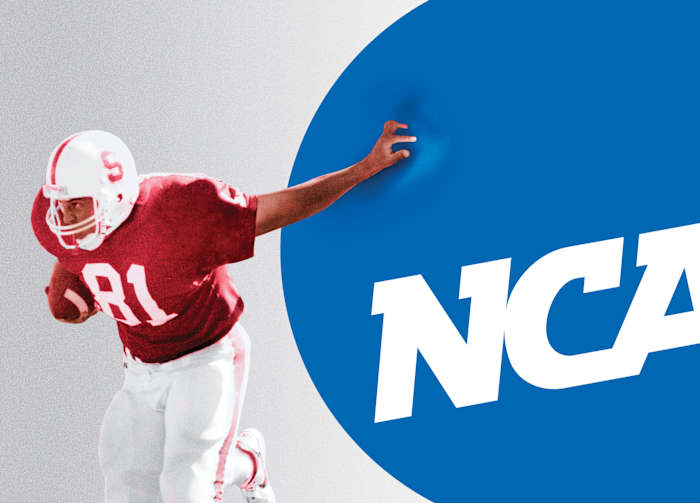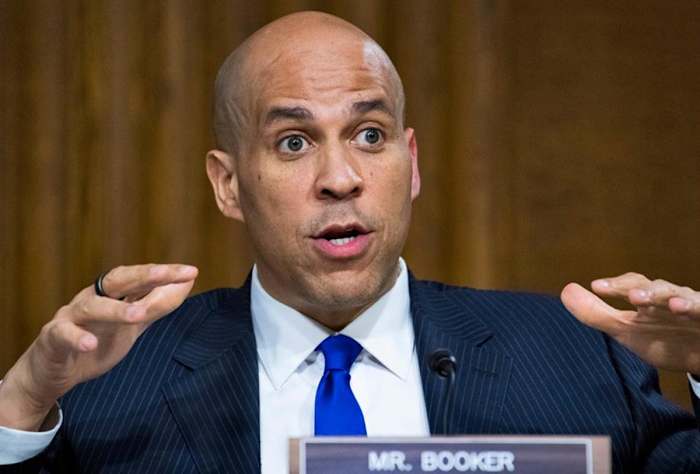Taking on the NCAA
I got into the college of my dreams because of a 4.0 and 1,600.
Not GPA and SAT, but yards per carry and receiving yards.
Well actually, that is a slight exaggeration. Forgive me—the older I get, the better I was.
I was, however, a high school All-America football player, earning a scholarship to play tight end at Stanford.
I would not be where I am today without football. I am not talking simply about what I do as a U.S. senator—though that, too—but who I am. I poured so much of my early life into a sport that returned to me gifts beyond my imagination. Football taught me about character, honor, leadership, discipline, grit and so much more. The men I played with, who coached me, believed in me, taught me and demanded from me, all shaped me in profound and indelible ways. I can never repay them or my sport for what it did for me; but I am on a mission to pay it forward and join with others to bring much-needed justice and fairness to college athletics.
I came to see during my playing days, and in the years since, that the NCAA is an exploitative, de facto for-profit industry that takes advantage of college athletes, endangers their health and safety, robs many of them of their peak earning years, undermines their promise of a college education and often leaves them injured with a lifetime of out-of-pocket medical bills and no support to pay them.
College sports is a $14 billion industry that is significantly generated by the unpaid work of young people. While I came from a family able to support me during my college years, many athletes do not, and they struggle to meet the costs of going to school that are beyond what a scholarship covers. These athletes rack their heads to find creative ways to contribute to their families back home or scrape together money for a plane ticket home or for their parents to come see them play. And if they do something against the NCAA’s biased rules—like sell an old jersey—the penalties can be swift and brutal.
Meanwhile, a player’s jersey with their number and name on it is sold in stores for more than what some of their parents may make in a day.
The NCAA likes to create a fiction that a scholarship for an athlete’s education is proportionate recompense. But the hours athletes put in make it hard for them to have a fair shot at the full education they are promised. College athletes can commit 30 to 60 unpaid hours a week to their sport, with no reasonable time left over to take on a traditional part-time job or internship if they need extra money. The NCAA does not adequately enforce time restrictions, making it challenging to balance a full course load, earn a degree on time and meet the demands of one’s sport.
While the NCAA is so fond of the term student-athlete in court, they rarely adopt the student-first mantra in practice. The NCAA touts a 90% graduation rate, but that tells only part of the story—and is very dependent on how they cut and/or fail to disaggregate the data. For example, just 56% of Black male athletes, who generate an outsize amount of college sports revenue, graduate within six years.
Once an athlete’s eligibility is gone, and thus their scholarship expires, they are of little use to the billion-dollar industry. Painfully, they have no guarantee to be able to return to finish out their education beyond their own ability to pay out of pocket for whatever classes they may need to complete a degree. Moreover, many athletes are saddled with lifelong injuries that sometimes don’t fully manifest until years after their college careers are over and incur significant medical expenses.
Even while athletes play in college, the NCAA does an insufficient job of protecting them. Since 2000, 30 college football players have died from heat-related illnesses caused by conditioning workouts that went too far. Even now, there are no enforceable penalties attached to the NCAA’s concussion guidelines, and, given the enormously high stakes of college sports, the incentives for most coaches—a win bonus, the opportunity to participate in postseason play and the likelihood of being hired by a larger program that will pay a higher salary—create perverse incentives to push boundaries.

UNDER FIRE Napier (above) led the Huskies to the 2014 NCAA championship, but his comments about going to bed hungry made headlines—and caught the attention of Booker, who had joined the Senate in ’13.
Greg Nelson/Sports Illustrated
Taken together, these failures amount to nothing short of systemic exploitation on the part of the NCAA that has robbed generation after generation of college athletes of the justice, fairness and opportunity that these young people deserve.
The NCAA must change.
That’s why my colleagues in the Senate and I have unveiled legislation to create a College Athletes Bill of Rights.
When it is passed into law, the athletes’ bill of rights won’t just allow college athletes to monetize their name, image and likeness, it will provide them with revenue-sharing agreements so they can actually reap some of the profits they help create.
The legislation will institute enforceable, evidence-based health and safety guidelines, and it will focus on improving academic outcomes and ensuring athletes who sustain sports-related injuries on the field or court receive support from the institution they hurt themselves representing.
While the NCAA has recently begun to pay lip service toward allowing college athletes to market their skills using their name, image and likeness, its history shows that while it will often nod toward the need for reforms, it fails to substantively implement them.
For example, in 2014, NCAA president Mark Emmert came before a U.S. Senate Commerce, Science and Transportation Committee hearing on many of these issues and seemed to understand and agree with some of the concerns my colleagues and I expressed. He even said, “I think this hearing is a useful cattle prod that we know the world is watching.”
But six years later—which, in an athlete’s life, can be their entire career—college athletes have little to nothing to show for the NCAA’s promises.
It’s not that the NCAA cannot address these issues—it’s that it won’t. It delays, deflects and denies until public outcry forces it to make change.
For example, a few months before that hearing, in the spring of 2014, Shabazz Napier helped lead UConn to win the men’s national basketball championship and then shared in an interview that there were some nights he went to bed hungry because he couldn’t afford to eat.
After news outlets across the country picked up on Mr. Napier’s comments and the NCAA came under fire in the press, it took the entity a little over a week to approve a rule change aimed at addressing issues surrounding college athletes’ access to meals.
That issue and so many others have been around since I was a college athlete in the 1990s. It is way past time for change, it is way past time that the exploitation of college athletes ends and it is way past time that college athletes have fairness, justice and access to the full opportunities they earn.
I do not have faith that the NCAA can be trusted to make the changes necessary. Not only is the NCAA financially incentivized not to upset the status quo, it now also wants Congress to grant it even more power by enacting a national standard to preempt the laws of many state governments that have recently begun seeking more fairness for college athletes.
Congress must act to protect the well-being of college athletes. And all of us—former players and fans alike—must join in the effort.
Indeed, the older I get, the better I was, and the clearer it is that we must do better for our college athletes.

